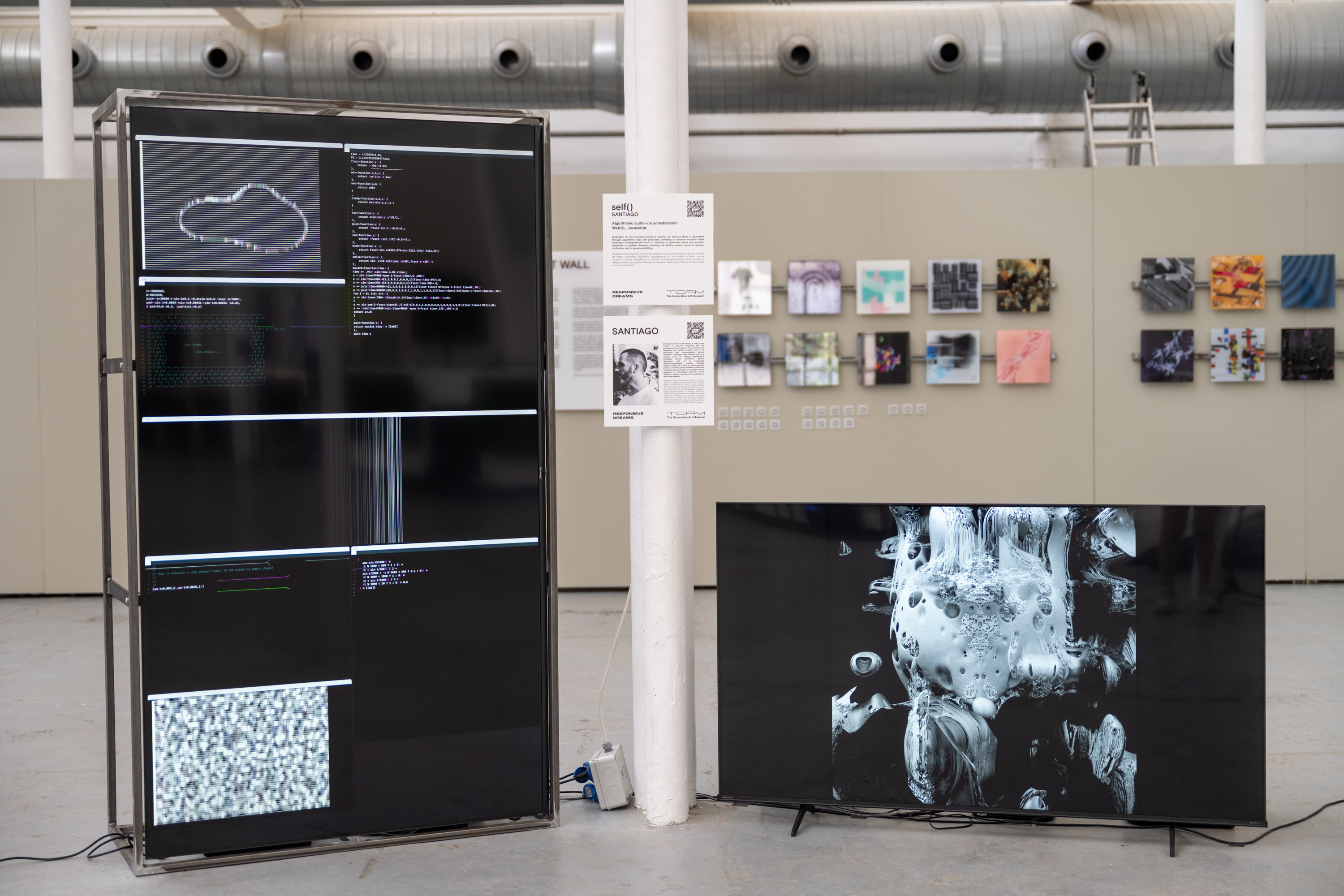Santiago
Santiago was born in Barcelona, in 1982, in the heyday of personal computing and the emergence of video games
Dream Project: Un-structured (2023)
Open "Un-structured"
Collect "Un-structured"
Installations
self()
Interview
A chat with Santiago
Previous Works
3:19
Cosmodesias
Cerebellum
Latent~~~>Gradient
Audio-visual Performance @ Syzygy
NFT's
ArtBlocks
fx(hash)
Versum
Objkt.com
Socials
instagram
twitter
BIO
This coincidence of biography and cultural evolution led to his fascination with technologically derived aesthetics. Santiago’s work utilizes code as a creative driver.
He employs mathematical principles, physic simulations, genetic algorithms, and AI to manipulate machine-interpretable routines.
Santiago regards coding as a form of transhumanistic poetry, a common ground between humans and machines, and his creative work centers around questions of technology’s synthetic nature, relation to society, and role in the evolution of the human species.
For the TGAM's Responsive Dreams exhibition he will be exploring how the canvas can become an infinite region, being the screen or display, an arbitrary frame that captures a limited part of that region. Each of these regions will have the capacity of being framed at any resolution or aspect ratio which, along with its deterministic randomness, has the potential for the artwork to grow indefinitely.
Installation: self() | Responsive Dreams 2025

self() is an audiovisual installation that explores the profound implications of artificial intelligence on human identity.
By juxtaposing two technological paradigms—algorithmic computation and generative AI—the installation examines the evolving relationship between deterministic logic and emergent behavior. It invites audiences to reflect on how these technologies influence both collective and individual identities, questioning whether AI will reinforce homogenization or encourage a spectrum of diversity and freedom.
The installation consists of multiple interconnected machines, with two large displays as its centerpiece, positioned on opposite sides of a central setup. One display showcases an algorithmic layer, generating music and visuals through rigid, rule-based computation. The opposing display presents the outputs of a generative AI model, driven by a custom implementation of StreamDiffusion, which interprets and transforms the algorithmic data in real-time. Together, these screens embody the conceptual tension between the structured predictability of algorithms and the emergent creativity of AI.
Both displays are accompanied by corresponding sonic outputs: algorithmically generated music on one side and AI-generated compositions on the other. This duality provides an immersive audiovisual experience, with the contrasts in style and evolution between the two paradigms made audibly and visibly clear.
Audience interaction is facilitated through a tactile MIDI interface that allows participants to adjust parameters and values within the system's generative module. These adjustments influence both the AI-generated music and visuals, subtly modifying the interplay without overshadowing the core conceptual narrative of the installation.
Dream Project: Un-structured (Responsive Dreams 2023)
↑ Click on the image to start the artwork
And as my dream slowly faded, I awoke with a brimming heart full again with wonder and hope.
An ethereal tableau of impossible geodes, woven into the very fabric of this dream, fading into the mist. Bygone ghouls and mystical sages whispering tales of timelessness and transcendence. A raven horse suspended in time and space, riding through time-beaten corridors of a medieval castle. A chorus of ancient voices reverberated through the walls that faintly delimited understanding.
It was all there while it wasn't. As if my only purpose in this dreamscape was to carry the essence of such poetic vision despite ever being able to remember or understand it.
What is Responsive Art to Santiago?
I understand the assignment of responsive art as an exercise on sustainability and preservation. Anyone that has developed software knows how fragile digital matter is to technological evolution and obsolescence.
As digital art evolves, we need to increase our focus on longevity, that’s where considering the canvas or support as a living and evolving structure comes to play. Not only hardware will evolve to become faster, more efficient, and more capable, but also displays will grow larger with the capacity to display more pixels and consequently more detail. I not only see this interplay with evolution as an exercise on preservation but an open dialogue with progress and time.
In my piece, I’ll be exploring how the canvas can become an infinite region, being the ‘screen’ or display, an arbitrary frame that captures a limited part of that region. Each of these regions will have the capacity of being framed at any resolution or aspect ratio which, along with its deterministic randomness, has the potential for the artwork to grow indefinitely both in space and in time.







